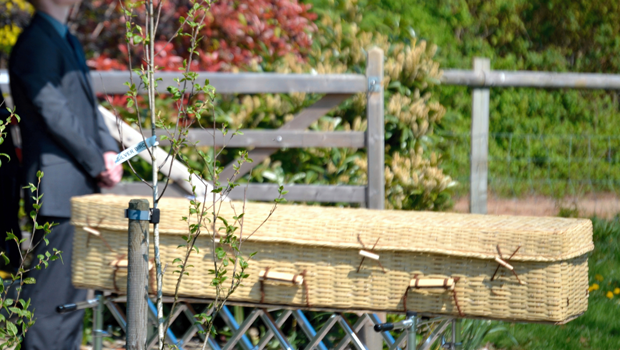The ‘alternative’ funeral is taking over
UK – Adam Lee explains growth of the ‘alternative’ funeral as younger generations turn away from religion.
Traditional funerals and burials are declining in popularity (to the point where churches are bemoaning the trend), in favor of alternatives like green burial and cremation. Personalized humanist funerals and secular celebrants are becoming more common, echoing a trend that’s also occurring with weddings.
As younger generations turn away from religion, the US is slowly but surely becoming more secular. As mortician and “good death” advocate Caitlin Doughty writes in her book, Smoke Gets In Your Eyes & Other Lessons from the Crematory, America is seeing a sea-change in traditions and rituals surrounding mortality.
Doughty and others see this shift not as something to be lamented, but to be embraced. Instead of following a script that’s been written for us, we can create our own customs and choose for ourselves how we want to be remembered. We can design funerals that emphasize the good we did, the moments that made our lives meaningful and the lessons we’d like to pass on.
Rather than the same handful of biblical passages, we can have readings from any book, poem or song in the whole broad tapestry of human culture. Rather than mourning, gloom and sermons on sin, we can have ceremonies that are joyful celebrations of the deceased person’s life.
But the rise of humanism isn’t just influencing what funerals look like; it’s changing how we die. For ages, when the church’s word was law, suicide was deemed a mortal sin. Even today, studies find that more fervent religious devotion correlates to more desire for aggressive and medically futile end-of-life intervention, not less.
The most famous case in recent years was Brittany Maynard, a 29-year-old woman with terminal brain cancer who ended her life in 2014 under Oregon’s death-with-dignity law. Maynard’s story put a sympathetic public face on the right-to-die movement, which proved decisive when California Governor Jerry Brown, a former Jesuit seminarian, signed a similar bill the next year despite heavy pressure from religious groups. He, too, cited the value of autonomy and freedom from suffering:
“In the end, I was left to reflect on what I would want in the face of my own death,” Brown wrote in a signing message. “I do not know what I would do if I were dying in prolonged and excruciating pain” he added.
In California and elsewhere, the staunchest adversaries of the right to die are churches and religious believers who assert that the time, place and manner of each person’s death is chosen by God, and that we have no right to change that regardless of the human cost.
And yet, almost without notice, that’s become a minority position. Gallup polls now find that as many as 70% of Americans now support a right to aid in dying. This position entails that, when people are suffering without hope of recovery, they should be allowed to end their lives painlessly, with medical help, at a time of their choosing.
For centuries, the Christian church wrote the script for how westerners deal with death. There was the deathbed confession, the last rites, the pallbearers, the obligatory altar call, the burial ceremony, the stone, the angels-and-harps imagery. Yet that archaic and stereotypical vision of death, like a mossy and weather-worn statue, is crumbling – and in its place, something new and better has a chance to grow.


Leave a Comment
You must be logged in to post a comment.